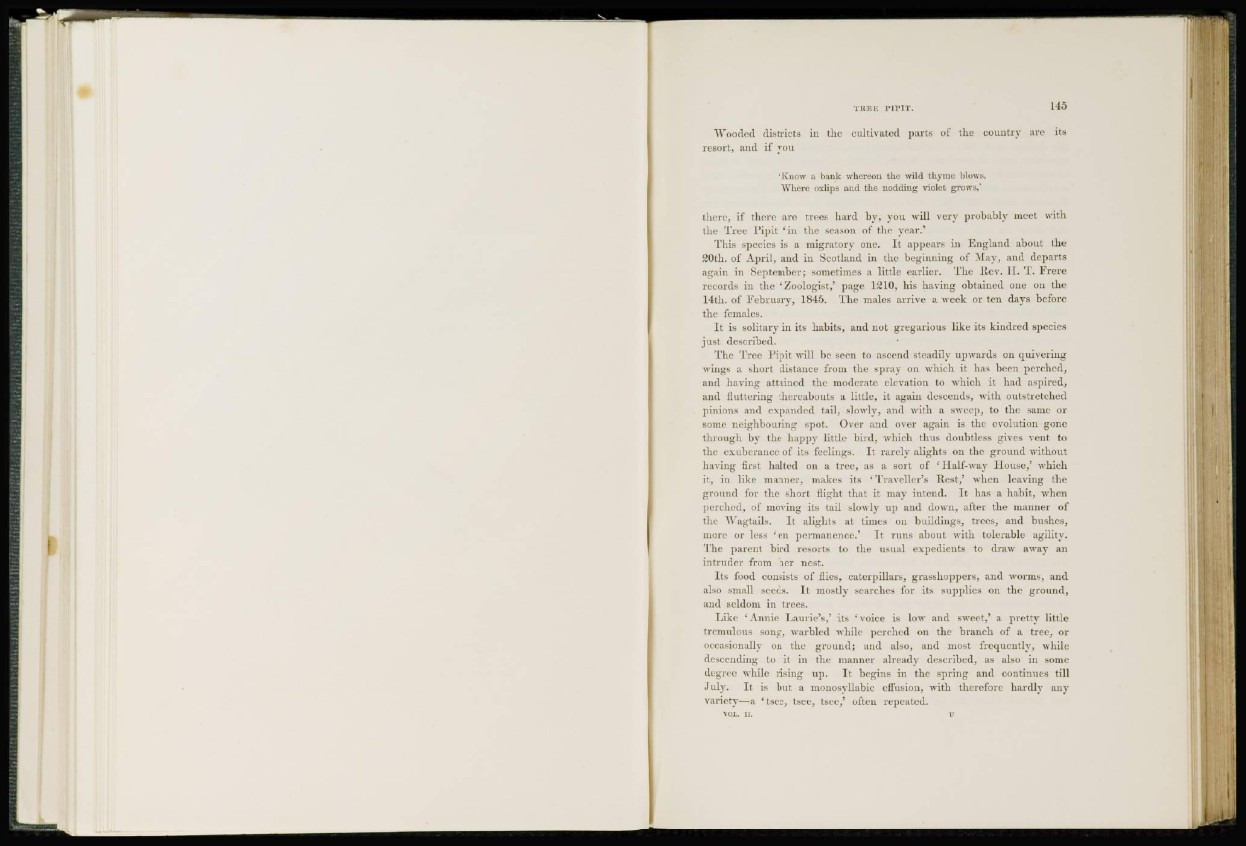
Wooded districts in the cultivated parts of the country are its
resort, and if you
'Know a bank whereon the wild thyme blows,
Where oxlips and the nodding violet grows,'
there, if there are trees hard by, you will very probably meet with
the Tree Pipit 'in the season of the year.'
This species is a migratory one. It appears in England about the
20th. of April, and in Scotland in the beginning of May, and departs
again in September; sometimes a little earlier. 'The lie v. II. T. Frere
records in the 'Zoologist/ page 1210, his having obtained one on the
14th. of February, 1845. The males arrive a week or ten days before
the females.
It is solitary in its habits, and not gregarious like its kindred species
just described.
The Tree Pipit will be seen to ascend steadily upwards on quivering
wings a short distance from the spray on which it has been perched,
and having attained the moderate elevation to which it had aspired,
and fluttering thereabouts a little, it again descends, with outstretched
pinions and expanded tail, slowly, and with a sweep, to the same or
some neighbouring spot. Over and over again is the evolution gone
through by the happy little bird, which thus doubtless gives vent to
the exuberance of its feelings. It rarely alights on the ground without
having first halted on a tree, as a sort of 'Half-way House,' which
it, in like manner, makes its ' Traveller's Rest/ when leaving the
ground for the short flight that it may intend. It has a habit, when
perched, of moving its tad slowly up and down, after the manner of
the Wagtails. It alights at times on buildings, trees, and bushes,
more or less 'en permanence.' It runs about with tolerable agility.
The parent bird resorts to the usual expedients to draw away an
intruder from her nest.
Its food consists of flies, caterpillars, grasshoppers, and worms, and
also small seeds. It mostly searches for its supplies on the ground,
and seldom in trees.
Like 'Annie Laurie's/ its 'voice is low and sweet/ a pretty little
tremulous song, warbled while perched on the branch of a tree, or
occasionally on the ground; and also, and most frequently, while
descending to it in the manner already described, as also in some
degree while rising up. It begins in the spring and continues till
July. It is but a monosyllabic effusion, with therefore hardly any
variety—a 'tsee, tsee, tsee/ often repeated.
VOL. II. U